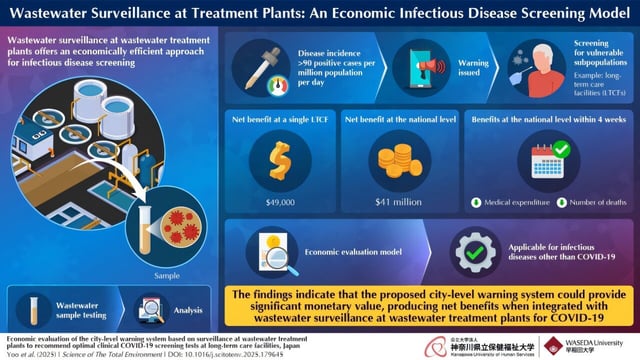Overview
- Researchers at Waseda University and the University of Tokyo proposed a city-level warning system that triggers weekly long-term care facility testing when wastewater data exceed 90 new COVID-19 cases per million residents per day.
- Modeling estimates net savings of $5,000 to $49,000 per facility and $3.5 million to $41 million nationally during four weeks of high COVID-19 incidence.
- Wastewater surveillance delivers broader population coverage, earlier outbreak detection, and lower per-pathogen costs compared to individual clinical sampling.
- The system’s feasibility is supported by parallels with the UK’s polio wastewater program and public willingness to fund $497 million annually for multi-pathogen monitoring.
- Following online publication, Japanese cities are discussing formalizing alert thresholds and expanding wastewater screening to include polio and influenza.
